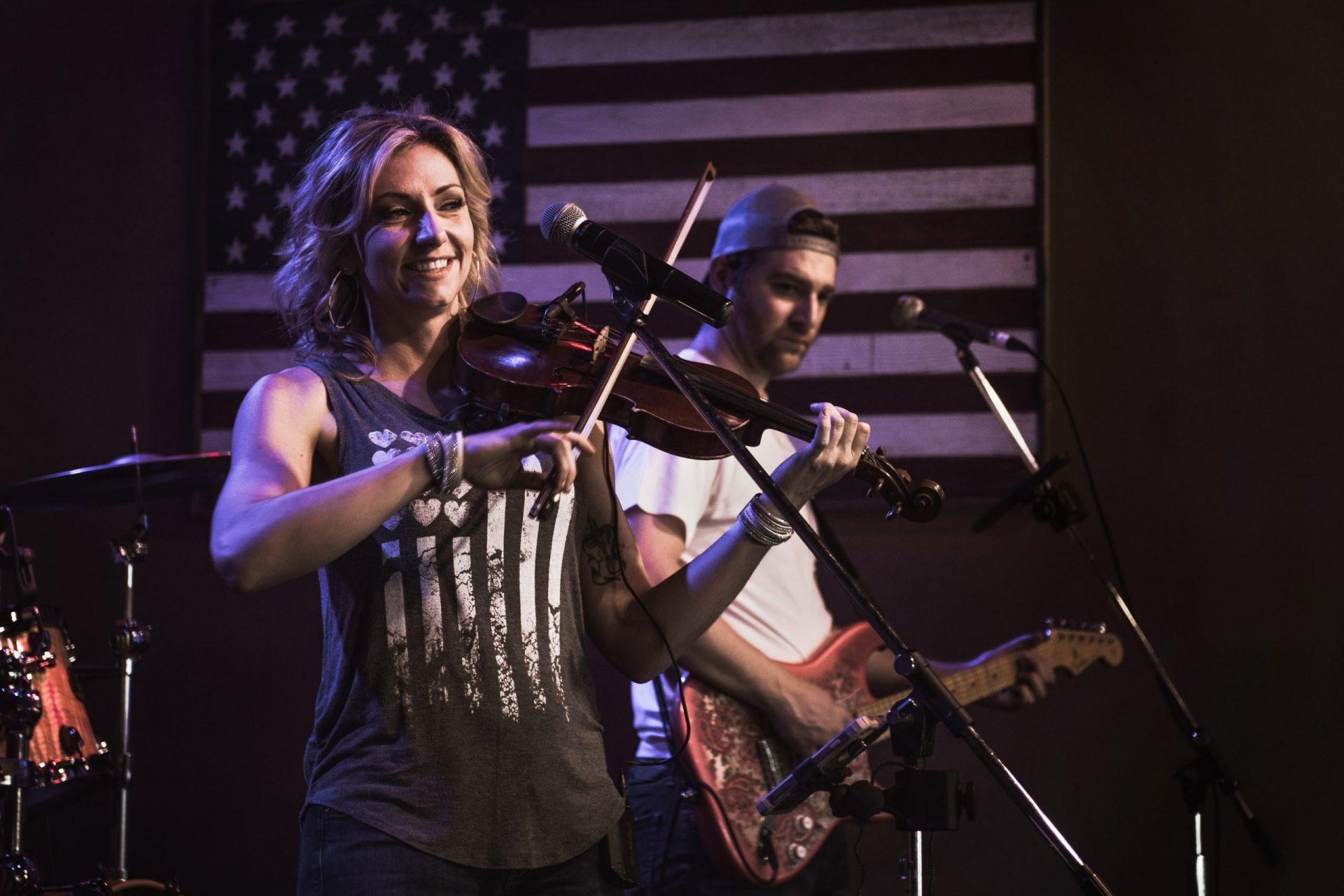Disclosure: Some of the links in this post are affiliate links. That means that if you click on a link and purchase an item, we may receive an affiliate commission at no additional cost to you. As an Amazon Associate I earn from qualifying purchases.
Wondering what the difference is between a violin and a fiddle?
Are you a little bit confused about the distinction between the two?
Fiddles and violins both have a prominent place in our culture and have a clear presence in a variety of music genres. However, very few people understand exactly what the difference is between these two instruments.
The truth is that the two instruments are one and the same. Unlike the difference between a banjo and guitar, however, the differences aren’t due to the “hardware”. They’re instead due to how the instrument is played.
When you think of a violin and fiddle you can look at them as a set of twins with two very different personalities. Take the common fiddle tune, Sally Goodin, for example. Then, compare it to a classical piece such as Concerto No. 5 in A Major by Mozart. While the instrument itself is essentially the same, the sound and style that come from the instrument are immensely different.
Ready to learn more? Below we’ll tell you all about violins and fiddles and will dig deeper into what their differences really are.
What is a Violin?

The violin is a high-pitched instrument that has a hollow wooden body and is very small. The typical violin comes with four strings. They can be played in three different ways.
The first and most common way of playing the violin is by drawing a bow across the strings. Although less common, the violin can also be played by plucking the strings with the fingers. The third way that a violin can be played is by striking the strings with the wooden side of the bow.
What Are Fiddles?

The most common definition of a fiddle is is that it’s a violin that is used to play folk, old-time, and country music. Along with the banjo and mandolin, it’s a staple of the bluegrass genre.
Fiddle music is also an iconic part of Irish culture and has been used to make some of the best traditional Irish and Celtic music. The Irish fiddle sound is incredibly popular and many fiddlers work hard to emulate it.
Fiddles can also be associated with other stringed instruments such as the bass fiddle.
The Distinction Between the Violin and the Fiddle
The violin and the fiddle are basically the same instruments. The only real difference between the two is the usage of the instrument. The main difference between a violin and a fiddle is the style of music that is played on each instrument and how the music is being played.

When it comes to the physical appearance and construction of these instruments, they are the same. The scroll, body, pegbox, and neck are identical on the violin and the fiddle. However, there is typically one physical difference between the violin and the fiddle. The instruments are set up differently.
One of the differences between the two instruments lies in the string choice. For example, a fiddler will often choose to use steel and modern synthetic strings while a violinist who plays classical music will be more likely to choose materials that are more traditional in nature.
Between the two instruments, there are also some differences in the bridges and tuners as well. Most fiddle players perform a bridge modification on their fiddle. They may modify the bridge in order to make it easier to perform double and triple stops.
The most common types of music that fiddlers play are cajun, bluegrass, old-time, traditional Celtic music, and country. The most common types of music that are played on a violin are classical and jazz. Typically, when the violin is used in rock and pop genres, a violin sound is much more common than a fiddle sound.
How Fiddlers and Violinists Differ in Approach
The basics of playing these instruments are pretty much the same. Yet, fiddlers and violinists typically take different approaches when learning, mastering, and having fun with their instrument of choice.

Violinists, for example, usually take a more academic and structured approach to learn their instrument. They’ll likely have been a music major in college or will have taken lessons from a young age. They often will have had a long string of experiences playing in orchestras and ensembles.
With the exception of jazz violinists, violin players will often be more likely to play with the aid of sheet music. They may not be as skilled with the art of improvisation.
Fiddle players, on the other hand, are often self-taught. They also tend to start improvising pretty early on in their progression with the instrument.
Instead of joining classical ensembles or orchestras, fiddlers are more likely to be found in a small country or bluegrass band. They may also attend bluegrass jams. Fiddlers often start learning their skills with the aid of traditional fiddle tunes, repetitive instrumentals that have a common spot in the bluegrass genre.
While the above points are generalities, they often hold true. It’s not only that fiddle players and violinists tend to focus on different genres. Their approach to learning and mastering their instrument is pretty different as well.
Final Thoughts
While many people are confused about the difference between a fiddle and a violin, the truth is that it’s not too difficult to understand. The instrument itself is essentially the same. However, there’s a world of difference in the way that it’s played and the players who bring the instrument to life.
Are you ready to get started playing one of these unique instruments? Check out our list of the top beginner fiddles and violins now.

Hi, I’m Harrison! I created this website to help musicians navigate the ins and outs of their craft and to help them choose new instruments and gear to add to their collection. I have 15 years of experience as a guitarist and singer and have also played many other instruments throughout the years including the bass guitar, piano, banjo, mandolin, and harmonica.

